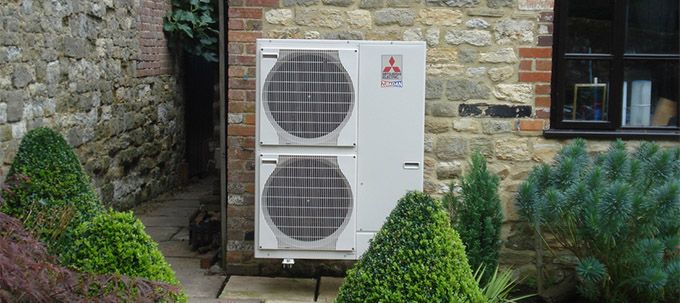Air source heat pumps (ASHPs) and ground source heat pumps (GSHPs) are the most popular types of heat pumps out there. Air source heat pumps draw heat from the air while ground source heat pumps do the same thing from the ground. Both are similar in operation. However, the type you choose will be dependent on their different requirements and setups in line with your heating needs. Let’s take a look at how these heating pumps compare to each other.
The Cost
There is a difference in the costs of installing both types of heat pumps. Ground source heat pumps absorb heat from the ground via ground loops. These ground loops have to be dug, and they cost a bit. This is why the cost of installing ground source heat pumps is twice that of an air source heat pump. Interestingly, despite the greater upfront cost of installing a ground source heat pump, in the long run, you have more fuel savings and lower energy bills. Then there is the fact that the Renewable Heat Incentive (RHI) payments are also higher for ground source heat pumps. So as far as costs go, GSHPs have the advantage.
The Energy Efficiency
Both types of heat pumps need some electricity to run. However, since they extract renewable heat from the environment, the energy output is much greater than the electricity input. In this regard, ground source heat pumps are more efficient than air-source heat pumps. This is because heat is transferred through the ground via the movement of water, which has a greater capacity to hold heat than air. Another thing is that since the temperature of the ground is fairly fixed at a constant 10 – 130C all year round, the efficiency GSHPs are not affected by seasonal changes. The opposite can be said about air source heat pumps. They are subject to fluctuating air temperatures. This means that it will be more difficult to generate heat when the air temperature outside is lower. So, in the colder months, ASHPs can’t be relied on to generate heat as efficiently as GSHPs.
However, when the air temperature outside is high, ASHPs generate heat more efficiently than when it’s lower.
The Installation
Regardless of the size, air-source heat pumps are easier to install than ground source heat pumps. They are like regular air-conditioning units that can be mounted on the external wall of your property. This unit is then connected to a boiler sized internal unit. The internal unit contains circulation pumps and hot water. They do not need to have holes dug in the ground as it is with GSHPs, and they do not require any land to be dug up for installation. They look similar to air conditioning units and are typically mounted on to an external wall outside a property. The external is connected to an internal unit containing circulation pumps and hot water, which is usually smaller than the average boiler.
Ground source heat pumps require enough outdoor space for a ground loop. Laying the ground loop vertically will require digging a borehole. This is costly, but it will take less space. While laying the ground loop horizontally is cheaper, it requires more space. The size of its internal unit is bigger (about the size of a fridge), so you will need more indoor space too. It also takes a lot of planning, time, and labor to install a ground source heat pump.
In A Nutshell
Ground-source pumps save more energy because of the consistent temperatures below the surface of the earth. In addition, converting ground temperatures takes less energy than converting air temperature, especially when the air temperature is low. Since it is buried underground, there is a reduced risk of damage to the units from bad weather. If the climate where you reside is moderate, then ASHPs are not a bad idea. For one, they will cost less to install and will provide a good return on your investment. The thing is whatever your choice is; you will be contributing to the environment and keeping the air around your house clean. You will also make some money from installing a heat pump system thanks to the Renewable Heat Incentive.


